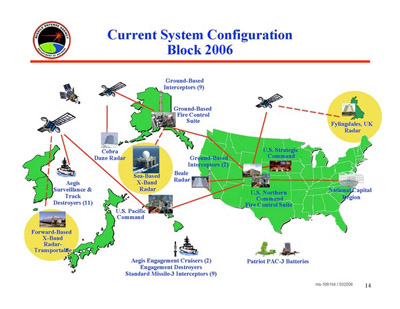 Lt. Gen. Henry Obering, directory of the Missile Defense Agency, told attendees at the 4th Annual Missile Defense Conference in Washington, D.C., this week that the layered missile defense system is facing some tougher tests this year in line with a maturing program. According to Reuters news service, Obering told reporters after his remarks, “I am confident that if we had to use the system, the system would work.” Currently Ft. Greeley in Alaska is home to nine ground-based interceptors, and Vandenberg AFB, Calif., has two. Officials say they can be brought to alert status but are not yet considered fully operational. The Pentagon plans to field 11 more interceptors by the end of 2007. Other elements of the system are to be fielded, including a sea-based x-band radar that officials say will be fully operational this year. The agency plans to test intercepting a simulated missile with a ground-based hit-to-kill interceptor this year. The last such test took place in October 2002.
Lt. Gen. Henry Obering, directory of the Missile Defense Agency, told attendees at the 4th Annual Missile Defense Conference in Washington, D.C., this week that the layered missile defense system is facing some tougher tests this year in line with a maturing program. According to Reuters news service, Obering told reporters after his remarks, “I am confident that if we had to use the system, the system would work.” Currently Ft. Greeley in Alaska is home to nine ground-based interceptors, and Vandenberg AFB, Calif., has two. Officials say they can be brought to alert status but are not yet considered fully operational. The Pentagon plans to field 11 more interceptors by the end of 2007. Other elements of the system are to be fielded, including a sea-based x-band radar that officials say will be fully operational this year. The agency plans to test intercepting a simulated missile with a ground-based hit-to-kill interceptor this year. The last such test took place in October 2002.
New B-52 Radar Makes First Flight
Dec. 12, 2025
The Air Force’s radar modernization effort for the B-52 Stratofortress entered flight testing recently, a “milestone” for the once over-budget system that senior leaders call the start of a new era for the Cold War bomber.

